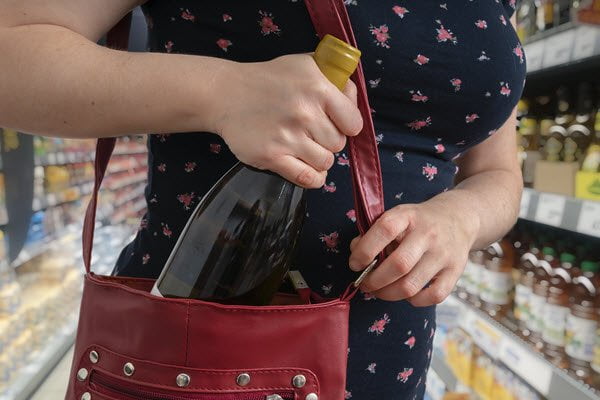Facial Recognition Technology (FRT) is revolutionary. Business operations are improved forever by enhancing security, improving customer experiences and streamlining processes. Of course, with new tech, there are ethical implications to ensure responsible usage. But…
Imagine the implications of automatically identifying known shoplifters before they steal anything. FRT is no longer restricted to James Bond movies.
Using FRT in Retail – not just security
Retailers use facial recognition technology to enhance security, streamline operations and… personalise customer experiences. Here’s how
- Enhancing Customer Experience: FRT can identify loyal customers, allowing retailers to offer tailored discounts or offers.
- Combating Crime: By recognising known shoplifters, FRT helps reduce theft. Retailers can receive instant alerts when a flagged individual enters the store, allowing security to act promptly.
- Behaviour Analysis: Retailers can analyse shopper behaviour to optimise store layouts and improve product placements. Understanding customer preferences helps in crafting better marketing strategies and enhancing the shopping experience.
While FRT provides significant benefits, it also raises privacy concerns. The technology involves capturing and storing biometric data, which can be intrusive if not handled with strict data protection measures. Retailers must ensure transparency in how they collect and use customer data to maintain trust and comply with regulations.
Uses of FRT for Access Control in Businesses
Combining access control systems with facial recognition technology enhances safety and streamlines staff entry. You can have hassle-free access without people fumbling for keys, fobs or cards. Your employees can be automatically recognised and granted entry!
- Improved Security: FRT accurately identifies individuals, reducing the risk of unauthorised access. For example, companies like Huawei use FRT to ensure only authorised personnel can enter sensitive areas such as data centres.
- Seamless Access: Employees can enter secure areas without fumbling for keys or remembering codes, streamlining entry processes. This not only saves time but also increases overall efficiency and productivity.
- Attendance Tracking: FRT can automatically track employee attendance, eliminating the need for manual check-ins. This ensures accurate timekeeping and simplifies payroll processes.
Using FRT in your access control system requires careful consideration of privacy issues. Businesses must be transparent about how they use biometric data and ensure compliance with relevant data protection laws and codes of practice (see below).
A Brief Look at Ethical Issues
Facial recognition technology comes with ethical issues. For example, have you considered how easily this tech can be misused? Or how biased it can be?
Real-life controversies highlight the urgent need to address these concerns:
- Privacy: The technology involves capturing and storing sensitive biometric data, raising concerns about how this data is used and protected.
- Consent: Individuals must be informed and consent to their biometric data being collected and used.
- Algorithmic Bias: FRT systems can be bassed. Often misidentifying individuals from certain racial or ethnic groups, even leading to discrimination.
- Potential for Misuse: Without proper safeguards, FRT can be used for unauthorised surveillance, infringing on personal freedoms.
Real-world examples highlight the ethical complexities and potential dangers of Facial Recognition Technology. Consider the case of Nijeer Parks, who in 2019 was wrongfully arrested in New Jersey due to a flawed facial recognition match. This incident underscores the serious consequences that can arise from inaccuracies in the technology.
Another stark example is China’s Social Credit System, which employs FRT for real-time surveillance of its citizens. This extensive use of facial recognition raises significant concerns about personal freedom and human rights.
Such pervasive surveillance demonstrates how FRT can be misused, highlighting the urgent need for robust ethical guidelines and regulations. This is where the BSIA codes of practice come in…
The New BSIA Code of Practices
The BSIA Code of Practice for facial recognition technology establishes a framework that promotes ethical usage while building public trust in its deployment within businesses. Designed to address ethical challenges, this code prioritises FRT compliance and aligns with BSIA guidelines to guarantee responsible usage. Here’s what you need to know:
- Trustworthiness Principles: The code is built on six core principles, including governance, accountability, and privacy. These ethical frameworks guarantee that FRT supports public safety while respecting individual rights.
- Comprehensive Approach: The guidelines cover the entire supply chain. From evaluating the need for FRT to its ongoing use. This holistic view helps mitigate risks and empowers businesses to act responsibly.
- Operational Ease: Unlike other standards, this non-technical code simplifies implementation. It even includes a metaphorical “stop button” to halt operations if adverse effects arise.
Blake’s: Your Local Fire & Security Partner
At Blake Fire & Security Systems, we understand that securing your premises is about more than just installing the latest innovation in security equipment…
It’s about creating a safe, compliant environment for your business. That’s why, as your local fire and security experts, we’re committed to providing bespoke solutions. Tailored to your unique business circumstances. Here’s what partnering with Blake’s looks like:
- Bespoke Solutions with a Personal Touch: We conduct thorough site surveys to understand your specific security challenges and tailor your security system to meet those needs. Expect a system that’s a perfect fit for your business.
- Rapid Response, When You Need It Most: Emergencies don’t wait and neither do we. We can offer swift remote support or, as a local company, we’ll be on-site fast. Your downtime is kept to a bare minimum and your security runs smoothly. So your business is always protected… as far as is humanly possible.
- Dedicated Support and Seamless Maintenance: We believe in building lasting partnerships. Our ongoing maintenance and support services ensure your security system remains reliable over time. With Blake’s, you’re not just working with a provider; you’re gaining a partner dedicated to the compliance of your business – that’s why we’re accredited to NSI Gold standard. Because of this dedication to accreditation… your Insurance company will stay happy!
Choose Blake Fire & Security Systems for a local company that is Big enough to cope AND Small enough to care! Ensuring your premises are compliant and your people are safe and secure.
Key points for FRT for businesses
Overall, Facial Recognition Technology presents significant opportunities for businesses to enhance security and improve customer experiences. However, it is essential to navigate the ethical landscape thoughtfully. Adhering to frameworks like the BSIA Code of Practice and choosing experienced providers like Blake Fire & Security Systems can ensure responsible and effective use of FRT.
Interested in how Facial Recognition Technology might help your business?
Contact us today to learn more about our installation and maintenance services and how we can help your business harness the power of FRT responsibly.








